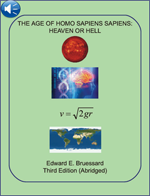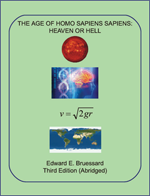Genomics
The genetic code is like a well-written computer program. Once launched, a computer program dutifully executes its written commands. Computer programs, however, are written by humans and are not always infallible. Computer programs also run on sometimes infallible machines built by humans. Sometimes a bug, flaw, or glitch inadvertently creeps into the process, and problems ensue in the program's execution.
Similarly, the genetic code ceaselessly executes its commands for creating and sustaining life. The genetics code is not infallible either. Sometimes things go wrong with the genetic code. Genomics is the scientific study of the genetic code of life. The ultimate goal of scientists is to decipher every bit of life's instructions embedded in the genetic code for all life forms on Earth. The human genome project represented a genetic drill down to the human species.
The human genome project formally was launched in 1990. According to the U.S. Department of Energy's (DOE) website, the goal of the human genome project was "to discover all the estimated 20,000 to 25,000 human genes and make them accessible for further biological study...to determine the complete sequence of the 3 billion DNA subunits (bases in the human genome)." And, as noted by the National Library of Medicine (NLM)'s website, which falls under the U.S. Department of Health and Human Service's National Institutes of Health organizational hierarchy, the goal of the human genome project was meant to "determine the sequence of the human genome and identify the genes that it contains."
The human genome project was completed in 2003 from the standpoint that the pieces of the genetic puzzle had been collected and placed on the table. The human genome is much like a giant jigsaw puzzle. The current challenge is for scientists to assemble the genetic code's billions of puzzle pieces to form a step-by-step picture of how life operates from the moment of conception to the moment of death. To date, scientists are making sturdy progress in assembling this gargantuan multi-billion-piece genetic puzzle. The dawn of the 21st century particularly represents exciting times for genomic scientists. And, with the advent of the CRISPR/Cas9 gene editing technique, Jennifer Doudna and Emmanuelle Charpentier are playing pacesetting roles in broadening human understanding of the genome of life.
From the Mayfly to Mayfield
The Mayfly's life span is profiled in the next video because, on average, it endures for an average of 24 hours from birth to death. The Mayfly relatively brief average life span affords biologists and cryptologists an opportunity to study its genetic processes from birth to death on short order to obtain a better understanding of how genes work throughout the life cycle.
All of this scientific commotion surrounding genomics, gene therapy, gene editing, and genetic engineering is not without risks. Tinkering with the genetic code of life is akin to playing God. There exists a human phenomenon known as the law of unintended consequences. That is to say, no matter how hard scientists try to be cautious, things do sometimes go horribly awry. Another challenge for scientists is to pursue genetic experimentation with utmost care. The motion picture titled "I Am Legend" dramatizes precisely how precarious it can be to tinker with the code of life despite the many beneficial applications derived from such scientific research.
Permission to Jam, Please
I am an eternal optimist. I am one who always sees the glass as half full. So, moving right along, it is time to momentarily forget about the dark and dreary aspects of daily life. I wish to close this page on a lighter and a more upbeat note. May I have your permission to jam, please? Thank you very much. It is time to unwind. It is time to party. It is time to jam.
Please visit related page:
Photo Credits for the above Slide Show:
- The Geologic Time Spiral
- DNA: The Molecule of Life (with text)
- From Chromosomes to Proteins
- DNA Replication Prior to Cell Division
- From the Cell to Protein Machines
- Protein Machines
- The Genetic Code
- From DNA to Humans
- Health or Disease?
- Gene Chips Reveal Susceptibilities
- View of Simplified Microbial Anatomy
- Expressing the Genome in Bacterial Cells
- Expressing the Genome in Plant Cells
- Mouse and Human Genetic Similarities
- U.S. Department of Energy (DOE) Joint Genome Institute (JGI) Strategic Planning for the Genomic Sciences
- Reduced Carbon Dioxide Emissions by Ethanol from Biomass
- Where is the Carbon Going?
- Properties of Earth's Upper Atmosphere
- Climate System


























